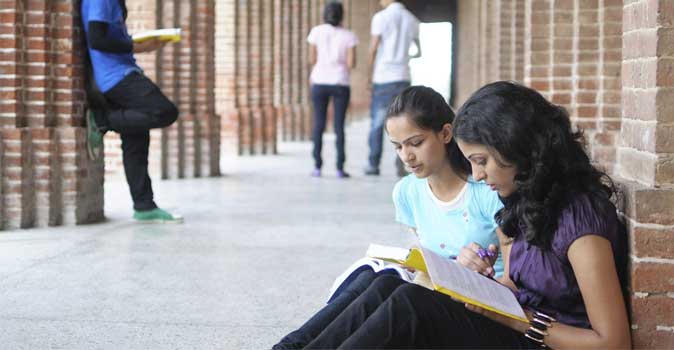During your time as an international student in the U.S., you may decide you want to get a job — whether it's to lighten the load of your tuition, gain some work experience, or just have a little extra pocket money to spend.
Keep in mind, though, that as an international student who is in the U.S. on a visa, you can't just go out and get any job you want. There are regulations you must follow. Working illegally will land you in hot water with the U.S. government. And nobody wants that.
Can You Work on a Student Visa in the U.S.?
Yes! Though there are some requirements you need to consider when looking for a job, it is possible to work on a student visa in the U.S.. According to the Department of Homeland Security, "F/M students' ability to work and train in the United States is limited by the law." You can contact your Designated School Official (DSO) to ensure your employment meets these requirements.
What to Do First
Before you begin the process of finding a job, contact your Designated School Official (DSO). That's the person your school designated to assist international students. If you are already a student, you likely already made contact with your DSO when you arrived. But if you haven't, any school official should be able to point you to the right person or department.
Your DSO will help you apply for a Social Security Number (required for all students working in the U.S.) and guide you through the appropriate steps.
Employment Opportunities for F-1 Student Visa Work
The Department of Homeland Security outlines four ways for international students to legally work in the U.S. on an F1 (student) visa:
- On-Campus Employment
- Off-Campus Employment
- Curricular Practical Training (CPT)
- Optional Practical Training (OPT)
1. On-Campus Employment
On-campus employment is the most freely available to F1 students, and refers to work that takes place on campus or at an "educationally affiliated off-campus location."
According to the Department of Homeland Security, being "educationally affiliated" means the off-campus location must meet at least one of these two criteria:
- Associated with the school's established curriculum
- Related to contractually-funded research projects at the post-graduate level
The latter part of that definition is worth emphasizing, as many colleges and universities have buildings and educational partnerships all over town.
So in other words, you could work somewhere on your school's campus, such as a bookstore, library, dorm, or cafeteria. Or you could work somewhere like an off-campus research lab that is affiliated with your school.
This is the only type of employment you can pursue starting in your first academic year, and you may apply as early as 30 days before classes start.
Work hours are limited to 20 hours per week while school is in session, but you can work full time during holidays and vacation periods. If you choose to work more than one on-campus job, your total combined hours per week cannot exceed 20 hours.
Still need to get your F-1 visa? Here's everything you need to know.
2. Off-Campus Employment
Jobs outside of your school are only available to international students who have completed one full academic year and who have a qualifying economic hardship or an emergent circumstance.
According to the DHS, a qualifying economic hardship entails "new, unexpected circumstances beyond [your] control," such as:
- Loss of financial aid or on-campus employment (if the student is not at fault)
- Large increases in tuition or living costs
- Substantial decrease in the relative value of currency the student depends upon to pay expenses
- Unexpected changes in the financial conditions for a student's sources of financial support
- Unexpectedly large medical bills not covered by insurance
- Other substantial, unexpected expenses
Emergent circumstances are defined as "world events that affect a specific group of F-1 students and which causes them to suffer severe economic hardship, including, but not limited to natural disasters, wars and military conflicts, national or international financial crises."
Certain regulatory requirements may be suspended for students that are from parts of the world that are experiencing emergent circumstances. This is known as Special Student Relief.
To apply for off-campus employment, contact your Designated School Official (DSO). He or she must approve the reason and recommend off-campus employment as the first part of the application process.
Note that you cannot begin working while your application is still being processed by the U.S. Immigration and Customs Enforcement. Apply early so you'll be ready to go when you receive an offer of employment. If approved, you may work 20 hours per week.

3. Curricular Practical Training (CPT)
Curricular Practical Training (CPT) should be part of your school curriculum. It is designed to give you real-world experience in your field of study, like an internship or practicum with a partnering employer, the DHS explains.
Unlike other employment categories, CPT can be full time, with no weekly hour limit. You can also have more than one CPT authorization at the same time.
Keep in mind that if you participate in a year or more of full-time CPT, you are ineligible for Optional Practical Training, or OPT (which you can read more about below).
To qualify for CPT, you must have completed one full academic year, unless you're a graduate student whose program requires immediate CPT.
In any case, the DHS advises seeking your DSO as your first step.
4. Optional Practical Training (OPT)
Optional Practical Training (OPT) refers to temporary employment relating to your field of study (working at a TV station, for example, would qualify if you're studying journalism). Eligible students can receive up to 12 months of OPT employment.
There are two types of OPT:
- Pre-completion OPT: This option is available once you have completed one full academic year at a U.S. college or university. You can work up to 20 hours a week when school is in session or full time when it is not.
- Post-completion OPT: You can apply for this option after completing your studies. Those who are authorized for post-completion OPT can work either part time or full time.
You'll need approval from your DSO, who will then endorse your application and help you submit it to U.S. Citizenship and Immigration Services.
Keep in mind that if you participate in both pre-completion and post-completion OPT, the 12-month maximum work period is divided between the two. If you participated in 9 months of pre-completion OPT during your time as a student, you can only participate in 3 months of post-completion OPT after you graduate.
STEM OPT Extension
If you finish your studies and participate in a period of post-completion OPT, you might then qualify for the STEM OPT extension, which is a 24-month period of temporary training that directly relates to your program of study.
This extension is only available if your employer is enrolled in the E-Verify program and if you have a degree in one of the STEM (science, technology, engineering, or mathematics) fields on this list.
Don't Try to Get Around the Rules to Work and Study in the U.S.A.
If you're considering running your own side gig (like this student who turned his dorm room into a restaurant), know that the U.S. government views that as a job.
To make it legal, you'd have to qualify and apply for OPT, which we covered above.
As you take the next steps toward employment, be mindful that working without adequate authorization can lead to deportation and your inability to return to the United States.
Don't risk it. It's not worth jeopardizing all the effort and expenses you've invested this far. Use the resources available to you, starting with your own school.
Watch out for these challenges for international students in the U.S.!




